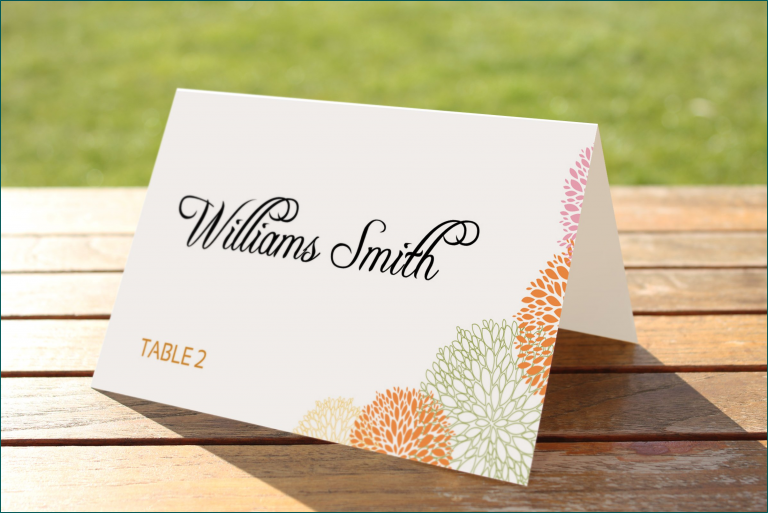When planning an event, whether a wedding, a conference, or a gala, ensuring guests can easily find their seats is essential. One effective way to accomplish this is by using table cards. These small cards, placed on each table, serve as a decorative element and provide important information to guide guests to their assigned seats.
In this article, we will explore the many benefits of using table cards and provide tips for successful implementation.
What Are Table Cards?
table cards are small cards that are placed on each table at an event to help guests find their seats. They typically include the guest’s name and table number, making it easy for them to locate their assigned seat.
These cards can be customized to match the event’s theme and design, adding a personalized touch to the overall decor.

Why Use Table Cards?
Using table cards offers several benefits for both event planners and guests:
1. Clear Seating Assignments
table cards provide clear seating assignments for guests, ensuring that they know exactly where to sit. This helps to avoid any confusion or potential seating disputes, creating a more organized and enjoyable experience for everyone.
2. Easy Navigation
By including table numbers on the cards, guests can easily navigate to their assigned tables. This is particularly useful for large events or venues with multiple rooms, where finding the correct table can be challenging without clear guidance.
3. Personalized Touch
table cards can be customized to match the event’s theme and design, adding a personalized touch to the overall decor. This attention to detail enhances the overall guest experience and creates a cohesive atmosphere.
4. Improved Event Flow
When guests can quickly and easily find their seats, it helps to improve the flow of the event. Guests can settle in without delay, allowing the event to progress smoothly and ensuring that important moments, such as speeches or performances, are not interrupted.
5. Efficient Event Planning
Using table cards simplifies the event planning process. Planners can easily create and print the cards, ensuring that each guest’s seating assignment is accurately reflected. This saves time and eliminates the need for manual seat assignments on the day of the event.
6. Professional Appearance
table cards add a professional touch to any event. They demonstrate attention to detail and organization, leaving a positive impression on guests. This is especially important for formal events or occasions where professionalism is paramount.
7. Keepsake for Guests
table cards can also serve as a keepsake for guests. They can take the card home as a memento of the event, reminding them of the special occasion. This adds a sentimental value to the table cards and further enhances the guest experience.
How to Use Table Cards
Using table cards is a straightforward process. Here are the steps to follow:
1. Determine the Design
Choose a design for your table cards that complements the event’s theme and decor. Consider using colors, fonts, and graphics that align with the overall aesthetic.
2. Create the Layout
Use a design software or template to create the layout for your table cards. Include the guest’s name and table number in a clear and legible format. Ensure that the font size is appropriate for easy reading.
3. Print the Cards
Once the layout is finalized, print the table cards on cardstock or high-quality paper. Make sure to print enough copies for each table at the event.
4. Arrange the Cards
Place the printed table cards on each table, ensuring they are visible and easily accessible to guests. Consider using stands or holders to elevate the cards for better visibility.
5. Communicate Seating Assignments
Communicate the seating assignments to guests through other means, such as a seating chart or escort cards. This will help guests locate their table easily and find their assigned seats using the table cards.
Examples




Tips for Successful Use of Table Cards
Consider the following tips to ensure the successful use of table cards at your event:
- 1. Plan Ahead: Start designing and printing the table cards well in advance to allow time for adjustments and troubleshooting.
- 2. Double-Check Accuracy: Verify that all guest names and table numbers are accurate before printing the cards to avoid any errors.
- 3. Test Printing: Print a sample card to ensure that the design, layout, and font are clear and legible.
- 4. Use Quality Materials: Opt for high-quality cardstock or paper to ensure that the table cards look professional and durable.
- 5. Consider Accessibility: Ensure that the table cards are easily visible and accessible to guests, especially those with mobility challenges.
- 6. Coordinate with Other Elements: Coordinate the design of the table cards with other event elements, such as menus or place cards, for a cohesive look.
- 7. Provide Clear Instructions: Include clear instructions on how to use the table cards, such as “Please find your name and table number to locate your seat.”
- 8. Monitor and Adjust: Throughout the event, monitor the table cards to ensure that they remain in place and are easily visible. Make adjustments if necessary.
- 9. Collect Feedback: After the event, gather feedback from guests to assess their experience with the table cards and make improvements for future events.
In Conclusion
Table cards are a valuable tool for guiding guests to their assigned seats at events. They provide clear seating assignments, easy navigation, and a personalized touch. By following the tips provided and using table cards effectively, event planners can create a seamless and enjoyable experience for their guests.
Table Card Template – Download